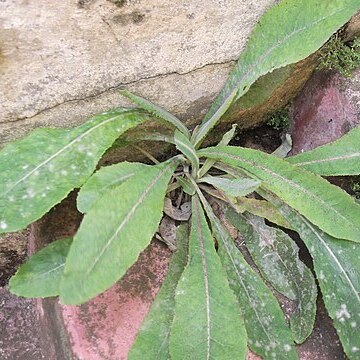Herbs 30-150 cm tall, perennial, with a taproot. Stem branched from base or higher, glabrous below synflorescence. Basal and lower stem leaves oblanceolate to elliptic, 6-24 × 1.5-6 cm, undivided or pinnatifid to pinnatipartite, glabrous, base narrowed (in basal leaves) to auriculately clasping (in lower stem leaves), margin denticulate to mucronulately dentate, apex obtuse to acute; lateral lobes if present 2-5 pairs, lanceolate, ovate, semiorbicular, or sometimes triangular-ovate; terminal lobe narrowly ovate to elliptic, ± large, apex obtuse to acuminate. Middle and upper stem leaves elliptic to lanceolate, smaller, otherwise similar to lower leaves. Synflorescence corymbiform, with several to many capitula. Capitula with very many (usually 180-300) florets; peduncle slender, apically white tomentose, densely glandular hairy or non-glandular. Involucre broadly campanulate, 1.2-1.5 cm, base ± white villous to tomentulose and glandular hairy or not. Phyllaries with or without glandular hairs, apex long acuminate; outer phyllaries lanceolate, 1-1.5 mm wide. Corolla 1.2-1.4 cm. Achene narrowly ellipsoid, 3.5-4.5 mm, moderately compressed, ± elliptic in cross section, weakly rugose, between lateral ribs and with 1(or 2) weakly prominent main rib(s) and several secondary ribs on either face. Pappus 6-9 mm, ± persistent. Fl. and fr. Jan-Oct. 2n = 18.
More
An erect herb. It keeps growing from year to year. It grows to 1 m high. The lower leaves form a ring and are deeply lobed. The lobes have a sharp tip. They also have short spines and teeth. The upper leaves are smaller. They are oblong and spoon shaped. The flower heads are yellow. The fruit is dry and oblong. They often have 5 ribs.

